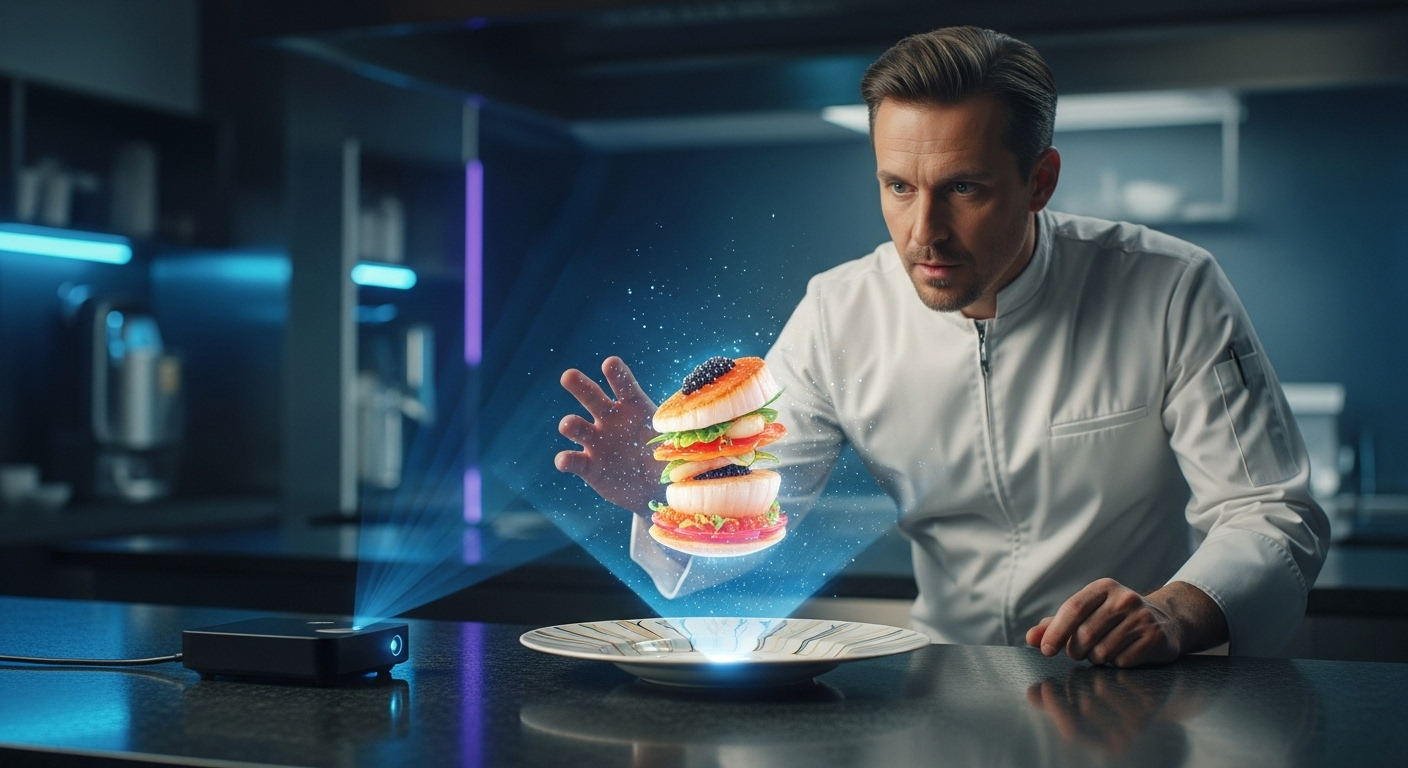Holographic Cuisine: The Future of Culinary Art
In the ever-evolving world of gastronomy, a groundbreaking fusion of technology and culinary expertise is reshaping the dining experience. Holographic cuisine, a cutting-edge concept that blends virtual reality with gourmet cooking, is captivating food enthusiasts and tech aficionados alike. This innovative approach to dining promises to revolutionize not only how we perceive food but also how we interact with it, offering a multi-sensory journey that transcends traditional culinary boundaries.

Beyond Visual Spectacle: The Science of Perception
While the visual aspect of holographic cuisine is undoubtedly striking, its impact extends far beyond mere aesthetics. Neurogastronomic research has shown that visual cues play a crucial role in our perception of flavor and overall dining satisfaction. By manipulating these visual elements through holography, chefs can influence diners’ expectations, enhance flavor profiles, and even alter the perceived portion size of dishes.
Crafting the Holographic Dining Experience
Creating a holographic culinary masterpiece requires a delicate balance of culinary skill and technological prowess. Chefs collaborate closely with visual artists and software developers to design intricate holographic overlays that complement and enhance their dishes. These projections can range from subtle accents that highlight specific ingredients to elaborate animations that tell a story through food.
Challenges and Innovations in Implementation
Despite its potential, holographic cuisine faces several challenges in widespread adoption. The need for specialized equipment and controlled lighting conditions can limit its application in traditional restaurant settings. However, innovative solutions are emerging, such as portable holographic projectors and adaptive lighting systems, which promise to make this technology more accessible to a broader range of establishments.
The Cultural Impact of Holographic Dining
As holographic cuisine gains traction, it’s sparking discussions about the future of food and dining culture. Critics argue that it may detract from the essence of culinary art, while proponents see it as a natural evolution in gastronomic expression. This debate reflects broader conversations about the role of technology in preserving culinary traditions versus driving innovation.
Sustainability and Holographic Cuisine
An unexpected benefit of holographic dining is its potential to address sustainability concerns in the food industry. By enhancing the visual appeal and perceived value of smaller portions, this technology could help reduce food waste. Additionally, the ability to create visually stunning dishes with simple, sustainable ingredients opens new avenues for eco-conscious dining experiences.
Educational Applications in Culinary Arts
Holographic technology is finding applications beyond fine dining, particularly in culinary education. Cooking schools are exploring the use of holographic displays to teach complex techniques, allowing students to visualize intricate processes in three dimensions. This immersive approach to culinary education could revolutionize how future chefs learn and perfect their craft.
The Future of Flavor: Synesthesia on a Plate
As holographic cuisine evolves, researchers are exploring ways to engage multiple senses simultaneously. Experiments combining holographic visuals with aromatic diffusers and textured surfaces aim to create truly synesthetic dining experiences. These multi-sensory meals could offer therapeutic benefits, potentially aiding in the treatment of eating disorders or enhancing nutrition for individuals with sensory processing challenges.
Global Cuisine Through a Holographic Lens
Holographic technology offers exciting possibilities for cultural exchange through food. Restaurants could transport diners to exotic locales, projecting immersive environments that complement international cuisines. This blend of virtual travel and gastronomy could foster greater appreciation for global culinary traditions and promote cross-cultural understanding.
Ethical Considerations in Digital Gastronomy
As holographic cuisine becomes more prevalent, it raises important ethical questions about authenticity and the nature of culinary art. Chefs and diners alike must grapple with the balance between technological enhancement and the integrity of traditional cooking methods. The culinary world is now tasked with defining new standards of excellence that incorporate both technological innovation and time-honored culinary skills.





